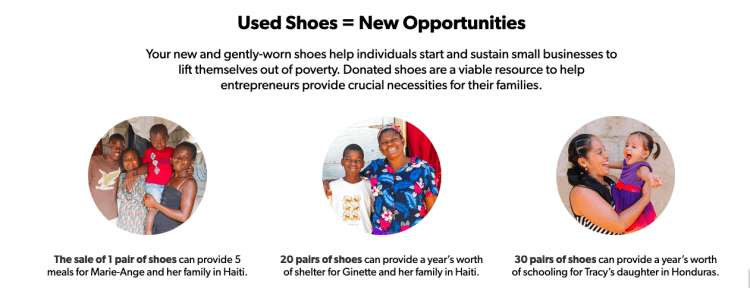The SMART Way to Create Fundraising Goals

Request a Demo
Learn how top nonprofits use Classy to power their fundraising.
If you’re looking to increase donations for your nonprofit organization, your first move will be to evaluate and validate the fundraising goals you set for your organization. Most nonprofits have fundraising goals, but not all goals are created equal. In 1981, an article by George Doran, There’s a S.M.A.R.T. Way to Write Management’s Goals and Objectives, appeared in Management Review. It outlined a five-part method for creating smart objectives that is now used in many industries for project management.
Although there are alternatives, we will be defining SMART goals with the following terms:
- Specific
- Measurable
- Ambitious/Attainable
- Relevant
- Time-Based
The SMART method helps to define your goals so that you can work towards them effectively, and applying these elements to your fundraising goals can give direction and focus to your campaign. In this post, we will explain the five qualities of a SMART goal and how they can be applied to your development plans.
Free Download: Nonprofit SWOT Analysis [Worksheet]
S Is for Specific
If you don’t know where you are going, you’ll end up someplace else. – Yogi Berra
The first step to refining your fundraising goals is to make them specific. It’s not enough to say, “We want to raise more money than last year.” That goal can be accomplished by raising one more dollar. Instead, focus on a specific goal that includes dollars raised and programmatic impact.
At first, it can feel like a challenge to quantify social impact and measure the good that a program achieves, but it’s really not that complicated. As long as you tie fundraising dollars to social impact and keep results in mind while setting your fundraising goals, you can easily communicate the potential impact to your network.
Monetary fundraising goals are easier to define and should be rooted in specifics like these four sample fundraising goals and objectives:
- Raise $10,000
- Gain 400 new donors
- Raise 20 percent more in total donations compared to last year
- Recruit 100 fundraisers to make campaign pages
Don’t forget to write down your goals and make them visible. Having a daily reminder of your objectives can help your team stay focused and motivated.
Download: World-Changing Work, The Modern Nonprofit Professional’s Experience
M Is for Measurable
Every line is the perfect length if you don’t measure it. – Marty Ruin
Measurability is a big part of making your goals specific, but it also merits its own explanation. By setting measurable goals, you make success and failure more objective. If your goal is to raise “a lot” of money, everyone involved may have different numbers in mind. Without a quantifiable goal, there is no way to truly judge if you have succeeded. To make your objectives measurable, ask questions like “how much?” and “how many?”
A Is for Ambitious/Attainable
Of course I’m ambitious. What’s wrong with that? Otherwise, you sleep all day.” – Ringo Starr
Your fundraising goals should be both Ambitious and Attainable. Research by Dr. Edwin Locke and Dr. Gary Latham suggests that difficult goals resulted in greater performance, and our everyday experiences support this. Think of your proudest accomplishment. Was it easy to achieve or very difficult? Most people derive a greater amount of satisfaction from achievements they had to work hard for. If a task is simple, you probably won’t be patting yourself on the back.
Keep in mind, however, that setting goals that are too difficult can also work against you. If a goal seems unachievable, people may feel inadequate or as though they are being set up to fail. Your fundraising goals should be challenging, not impossible.
R Is for Relevant
Few will have the greatness to bend history itself; but each of us can work to change a small portion of events, and in the total of all those acts will be written the history of this generation. – Robert Francis Kennedy
Going back to your proudest accomplishment, think about why it is important to you. Did getting your college degree allow you to pursue new career opportunities and provide a better life for your family? Did losing weight help you lower your blood pressure and increase your life expectancy?
We value achievements that make a positive difference, so you should know the “why” behind all your fundraising goals. Much like how donors need to know what impact their gift will have, fundraisers need to be reminded of the work their development goals support. You should know how every fundraising goal relates to your mission.
This facet also ties back to showcasing impact and can be achieved by simply sharing those goals on your campaign page. Check out how Soles4Souls uses simple, powerful impact statements and images to demonstrate the power of donating a pair of new or gently worn shoes.

Read Next: 36 Free Nonprofit Resources to Bookmark
T Is for Time-Based
Time is a drug. Too much of it kills you. – Terry Pratchett
Deadlines are an important part of making your objectives specific and measurable. If a goal isn’t time-based, you can put it off indefinitely. As we have written in the past, having a visible deadline can be a powerful motivator for donors and fundraisers. But don’t forget to allow a reasonable amount of time to achieve your results. Your deadline, too, should be ambitious but attainable.
Having a timeline for your campaign also makes it easy to check your progress toward your goal. If you are two weeks into a month-long fundraiser, and you are nearly halfway to your goal, you are doing great! But if the campaign is half over and your fundraising thermometer is lagging, you will know that it is time to put in some extra work to catch up.
Download: Build Your Annual Fundraising Calendar
An Example of a SMART Goal
Susie works for A Strong Start, a nonprofit that provides school supplies for children in need. She is planning their annual fundraiser and has sent the following email to the organization’s staff.
Hello everyone,
I know you’re all excited about our upcoming fundraiser and are eager to know what we are planning. This year’s campaign will begin August 4 and run through August 25. Our number one goal this year is to raise $14,000 so that we can send 500 students to school with the supplies they need.
Last year, we raised $11,245, so although this year’s goal is aggressive, I think the addition of our development assistant and the improving economy make it possible. In the coming weeks, we will finalize our plans for recruiting fundraisers and donors, but I wanted you all to know our goal as soon as possible.
Sincerely,
Susie
Now let’s check Susie’s plan to see if it meets all the requirements of a SMART goal.
- Specific – The goal is to raise $14,000.
- Measurable – At the end of the campaign, the organization will be able to measure the amount they have raised against their goal.
- Ambitious/Attainable – Although this year’s goal is more than they raised last year, Susie has considered the factors that make this increase possible. It will be challenging, but not impossible.
- Relevant – Susie’s email explains that reaching their fundraising goal will help 500 students begin the school year ready to learn.
- Time-Based – The annual campaign has a clear beginning and end. It begins August 4 and ends August 25.
Susie’s goal has all the qualities of a SMART goal.
Download: The Plan Your Campaign Field Guide
Building Your Own SMART Goal
You may have noticed that the description of one quality often lead back to another. Defining one element of your goal can help you develop the rest. And you don’t have to start with specificity.
Maybe you already know when the campaign is going to begin and end. Knowing the timeline of a fundraiser can help you determine how much you might be able to raise. Or your goal can begin with the “Relevant” section. You can decide what impact you want this campaign to support and then determine how much you need to raise. Wherever you start, you can use SMART objectives to bolster your fundraising.
Check out the following posts for more information on setting fundraising goals, how to create measurable goals, and more:
- How to Set SMART Run/Walk Fundraising Goals
- Set Small Goals to Achieve Big Impact
- 3 Ways to Use Fundraising Data for Campaign Success
- How Incremental Goals Inspire Your Fundraisers
For even more tips on setting goals and reaching them, check out the recordings from Collaborative: Virtual Sessions. This four-day online experience took the place of Classy’s annual in-person Collaborative conference in Boston. The online sessions led by industry leaders provided fundraising and marketing tips, data and industry trends, and more—all curated for nonprofits adjusting to the impact of COVID-19 and running operations remotely. Access the recordings from the event as well as 20 exclusive bonus sessions at the link below.

Access the Collaborative Extended Sessions
Subscribe to the Classy Blog
Get the latest fundraising tips, trends, and ideas in your inbox.
Thank you for subscribing
You signed up for emails from Classy
Request a Demo
Learn how top nonprofits use Classy to power their fundraising.
 Explore Classy.org
Explore Classy.org 

